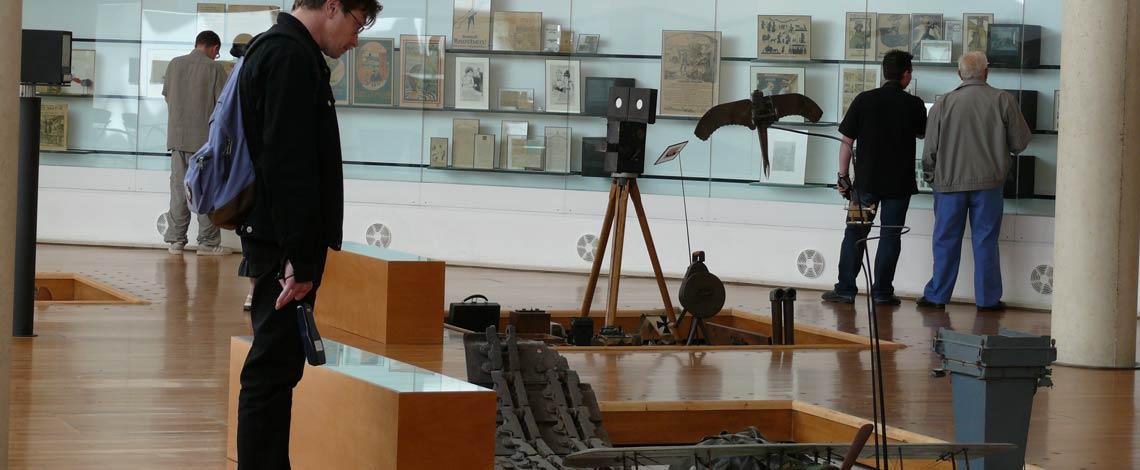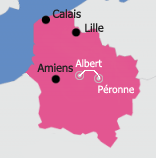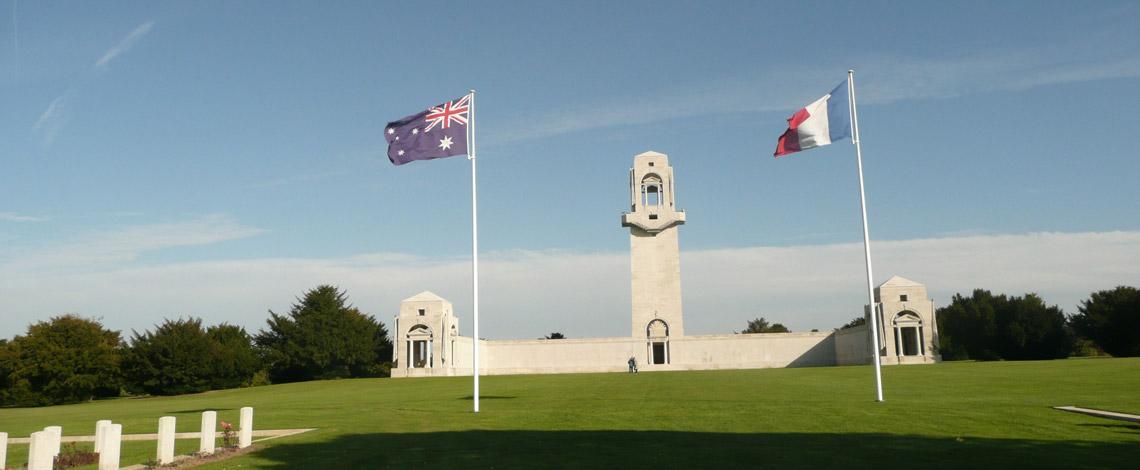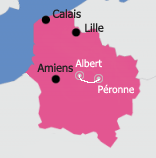Explore the historic legacy of Albert: the Allies’ main town behind the lines nearest the battlefields was devastated during the war but retains one of the British troops’ World War I icons – the golden Madonna on top of the basilica (they claimed that whoever made it fall would lose the war). The basilica’s crypt is how home to the
Musée Somme 1916 with its compelling re-creations of trench life.
Ten minutes east you’ll discover the Mametz Wood Memorial, a dramatic 1980s sculpture of a red dragon commemorating an engagement of the 38th (Welsh) Division of the British Army between 7 and 12 July 1916.
Crossing the Vallée de la Haute Somme south-west of Contalmaison, you’ll pass quiet little villages and enjoy views over small fish-filled lakes. At Villers-Bretonneux half an hour from Contalmaison lies the
Australian National Memorial.
From here it’s another half-hour’s drive to vibrant
Amiens with its UNESCO-listed cathedral. Here you will find the famous 17th-century Ange Pleureur or Weeping Angel, postcards of which were popular with British, Australian and New Zealand troops writing home.
Heading back to Péronne, you’ll pass more classically French villages and small lakes, and see more cemeteries – at Corbie, at Vaux sur Somme (with its viewing platform over the valley), at Méricourt-l'Abbé, at Cappy, at Suzanne, at Curlu and at Herbécourt.
At Froissy, you can also take a trip on the Petit Train de la Haute Somme, a steam railway Railway built in 1916 to supply trenches and artillery, offering visitors panoramic views over the Somme Valley.
Where to Refuel:
Albert: Restaurant La Basilique opposite the basilica, serving classic and modern regional cuisine including ficelle picarde. You can also stock up on local products in the town’s Boutique du Coquelicot (‘Poppy Shop’).
Amiens (outskirts): the Aubergade à Dury with its Michelin-starred dining.







